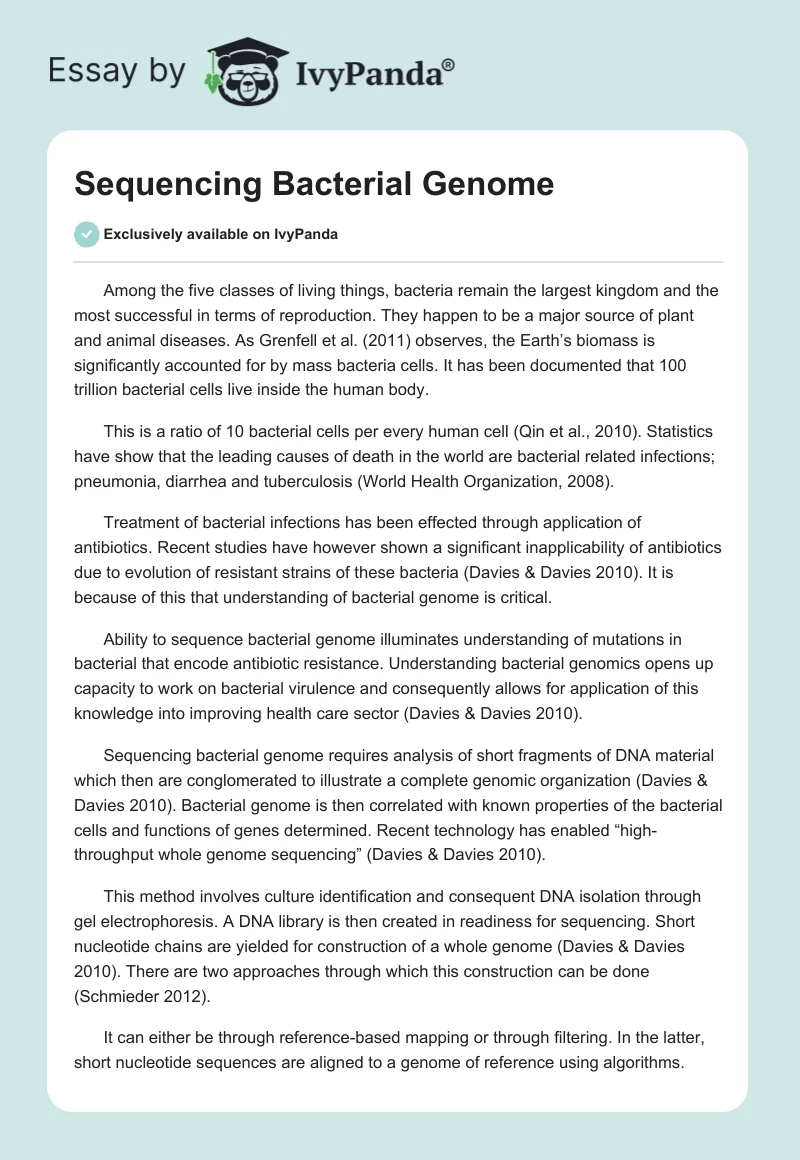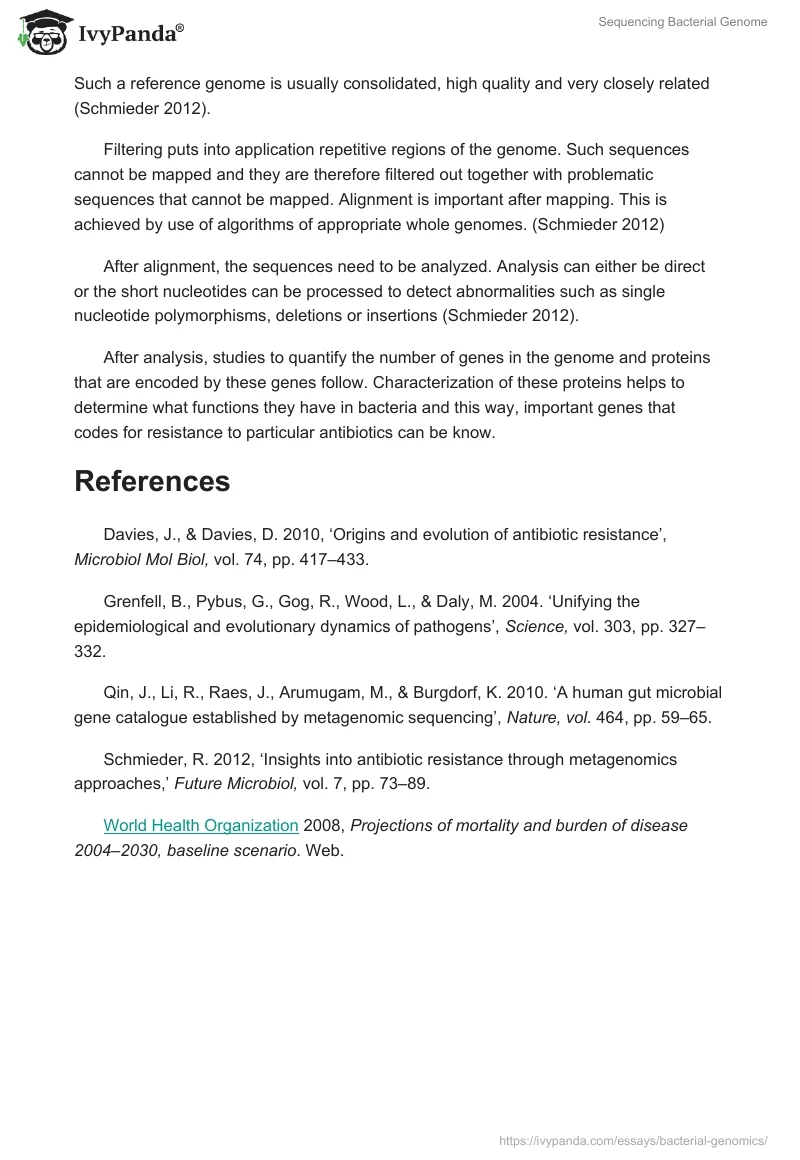Among the five classes of living things, bacteria remain the largest kingdom and the most successful in terms of reproduction. They happen to be a major source of plant and animal diseases. As Grenfell et al. (2011) observes, the Earth’s biomass is significantly accounted for by mass bacteria cells. It has been documented that 100 trillion bacterial cells live inside the human body.
This is a ratio of 10 bacterial cells per every human cell (Qin et al., 2010). Statistics have show that the leading causes of death in the world are bacterial related infections; pneumonia, diarrhea and tuberculosis (World Health Organization, 2008).
Treatment of bacterial infections has been effected through application of antibiotics. Recent studies have however shown a significant inapplicability of antibiotics due to evolution of resistant strains of these bacteria (Davies & Davies 2010). It is because of this that understanding of bacterial genome is critical.
Ability to sequence bacterial genome illuminates understanding of mutations in bacterial that encode antibiotic resistance. Understanding bacterial genomics opens up capacity to work on bacterial virulence and consequently allows for application of this knowledge into improving health care sector (Davies & Davies 2010).
Sequencing bacterial genome requires analysis of short fragments of DNA material which then are conglomerated to illustrate a complete genomic organization (Davies & Davies 2010). Bacterial genome is then correlated with known properties of the bacterial cells and functions of genes determined. Recent technology has enabled “high-throughput whole genome sequencing” (Davies & Davies 2010).
This method involves culture identification and consequent DNA isolation through gel electrophoresis. A DNA library is then created in readiness for sequencing. Short nucleotide chains are yielded for construction of a whole genome (Davies & Davies 2010). There are two approaches through which this construction can be done (Schmieder 2012).
It can either be through reference-based mapping or through filtering. In the latter, short nucleotide sequences are aligned to a genome of reference using algorithms. Such a reference genome is usually consolidated, high quality and very closely related (Schmieder 2012).
Filtering puts into application repetitive regions of the genome. Such sequences cannot be mapped and they are therefore filtered out together with problematic sequences that cannot be mapped. Alignment is important after mapping. This is achieved by use of algorithms of appropriate whole genomes. (Schmieder 2012)
After alignment, the sequences need to be analyzed. Analysis can either be direct or the short nucleotides can be processed to detect abnormalities such as single nucleotide polymorphisms, deletions or insertions (Schmieder 2012).
After analysis, studies to quantify the number of genes in the genome and proteins that are encoded by these genes follow. Characterization of these proteins helps to determine what functions they have in bacteria and this way, important genes that codes for resistance to particular antibiotics can be know.
References
Davies, J., & Davies, D. 2010, ‘Origins and evolution of antibiotic resistance’, Microbiol Mol Biol, vol. 74, pp. 417–433.
Grenfell, B., Pybus, G., Gog, R., Wood, L., & Daly, M. 2004. ‘Unifying the epidemiological and evolutionary dynamics of pathogens’, Science, vol. 303, pp. 327–332.
Qin, J., Li, R., Raes, J., Arumugam, M., & Burgdorf, K. 2010. ‘A human gut microbial gene catalogue established by metagenomic sequencing’, Nature, vol. 464, pp. 59–65.
Schmieder, R. 2012, ‘Insights into antibiotic resistance through metagenomics approaches,’ Future Microbiol, vol. 7, pp. 73–89.
World Health Organization. 2008, Projections of mortality and burden of disease 2004–2030, baseline scenario. Web.


